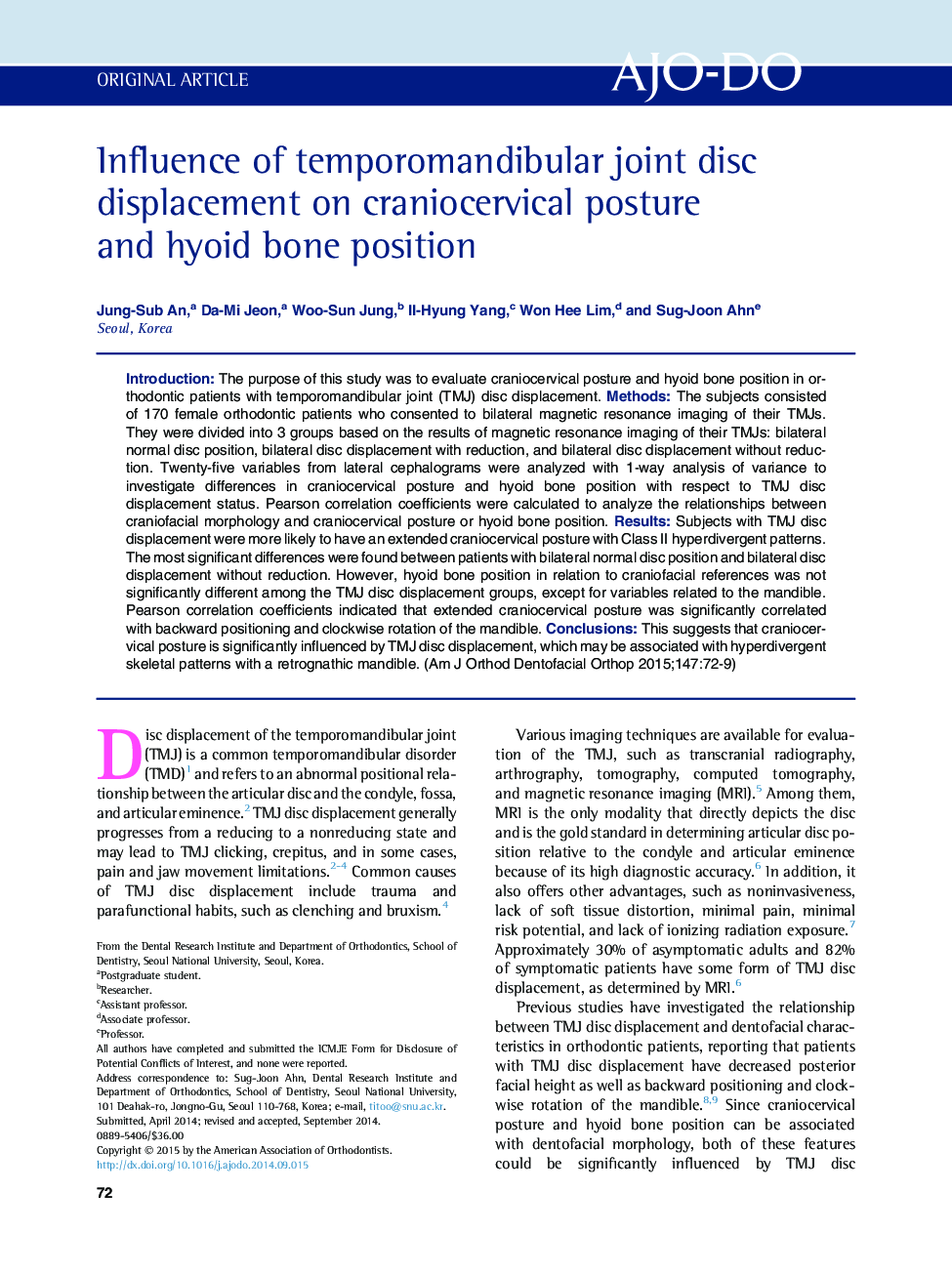| کد مقاله | کد نشریه | سال انتشار | مقاله انگلیسی | نسخه تمام متن |
|---|---|---|---|---|
| 3116149 | 1582694 | 2015 | 8 صفحه PDF | دانلود رایگان |
• Temporomandibular joint disc displacement is associated with extended craniocervical posture.
• Hyoid bone position was relatively stable regardless of temporomandibular disc displacement.
• Extended craniocervical posture was correlated with Class II hyperdivergent patterns in patients with temporomandibular disc displacement.
IntroductionThe purpose of this study was to evaluate craniocervical posture and hyoid bone position in orthodontic patients with temporomandibular joint (TMJ) disc displacement.MethodsThe subjects consisted of 170 female orthodontic patients who consented to bilateral magnetic resonance imaging of their TMJs. They were divided into 3 groups based on the results of magnetic resonance imaging of their TMJs: bilateral normal disc position, bilateral disc displacement with reduction, and bilateral disc displacement without reduction. Twenty-five variables from lateral cephalograms were analyzed with 1-way analysis of variance to investigate differences in craniocervical posture and hyoid bone position with respect to TMJ disc displacement status. Pearson correlation coefficients were calculated to analyze the relationships between craniofacial morphology and craniocervical posture or hyoid bone position.ResultsSubjects with TMJ disc displacement were more likely to have an extended craniocervical posture with Class II hyperdivergent patterns. The most significant differences were found between patients with bilateral normal disc position and bilateral disc displacement without reduction. However, hyoid bone position in relation to craniofacial references was not significantly different among the TMJ disc displacement groups, except for variables related to the mandible. Pearson correlation coefficients indicated that extended craniocervical posture was significantly correlated with backward positioning and clockwise rotation of the mandible.ConclusionsThis suggests that craniocervical posture is significantly influenced by TMJ disc displacement, which may be associated with hyperdivergent skeletal patterns with a retrognathic mandible.
Journal: American Journal of Orthodontics and Dentofacial Orthopedics - Volume 147, Issue 1, January 2015, Pages 72–79
